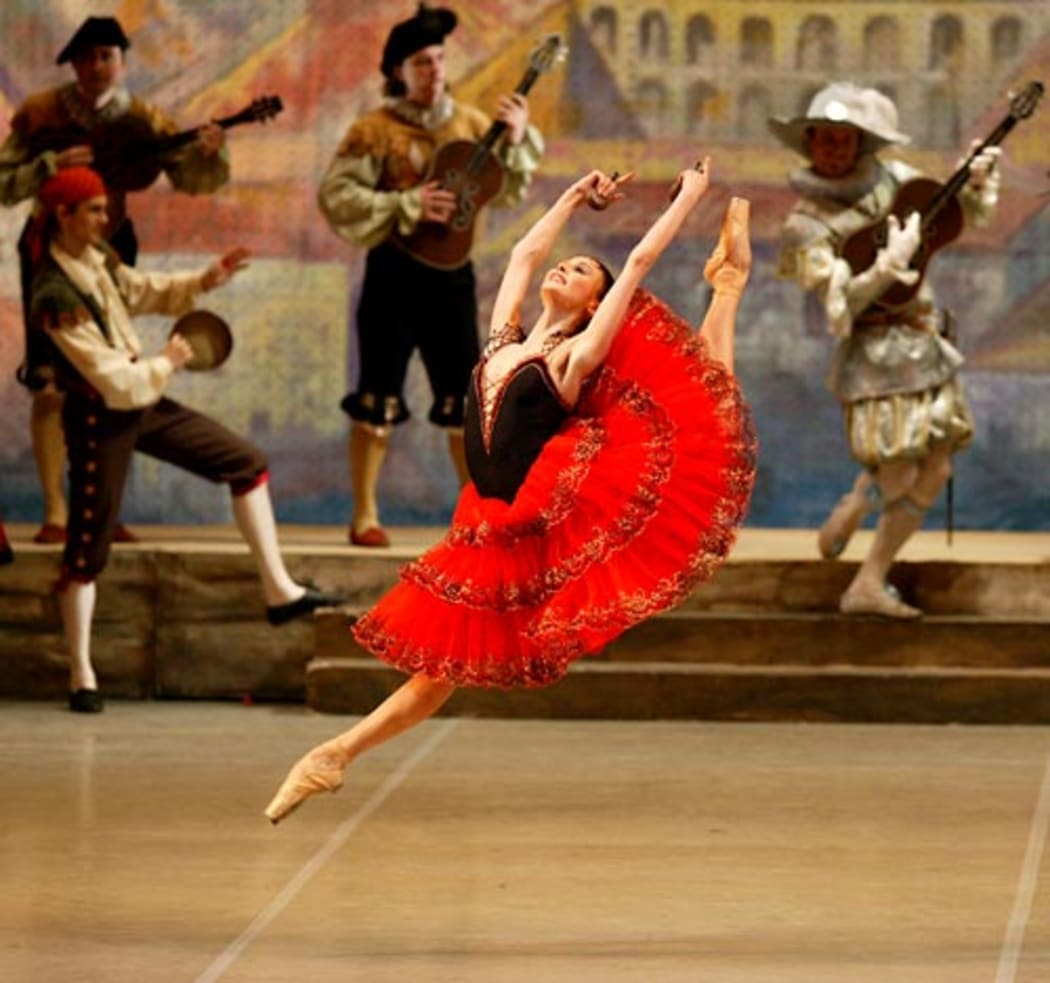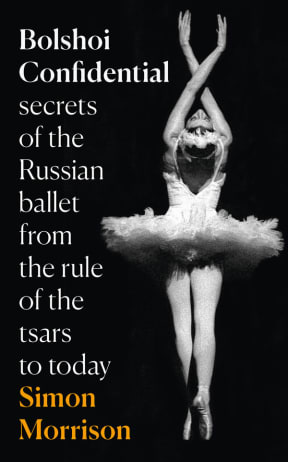
Svetlana Zakharova in Kitri Variation with the Bolshoi Ballet Photo: Wikimedia commons
The Bolshoi Ballet has always been one of Russia’s most illustrious and well known institutions since its establishment in 1880. It’s known as much for scandals and turbulence off stage as for performances on stage. The most dramatic in recent times occurred in 2013 when a hooded assailant hurled battery acid into the face of the artistic director, partially blinding him.
Princeton university music historian Simon Morrison has written a history of the Bolshoi, which he describes as a crown jewel during the imperial era, an emblem of soviet power during the 20th century and a showcase for a reborn nation in the 21st. Indeed, the history and the politics of Russia seems intertwined in many ways with the ballet, or perhaps the other way around.
The book is called Bolshoi Confidential: Secrets of the Russian Ballet from the Rule of the Tsars to Today.
Read an edited excerpt of the interview below:
There’s a lot to cover. There are the mini scandals, the personality conflicts, there is all of politics and out and out tyrannical oppression that found its way onto some of our most famous composers who composed for the ballet. But shall we begin with a more recent event, the acid attack on the artistic director in 2013. It brought the ballet back into the headlines for all of the wrong reasons. Remind us what happened there.
In January of 2013 outside of the apartment of the artistic director of the Bolshoi ballet, Sergei Filin’s apartment, he was coming home late from rehearsal and somebody called out hello to him and he turned around and he was splashed with diluted battery acid. He was scalded. He recognised immediately that something terrible had struck him and he tried to rub off the burning sensation in the snow, while also calling for help. Help eventually did arrive and it was revealed after he went to Moscow Hospital and after he was sent abroad to Germany for several operations at a university hospital, that he had been splashed with acid, that he had suffered burns, scarring around the neck and lost some of his hair.
He went completely blind in one of his eyes and he lost a good percentage of sight in the other eye, such that in the present day when he looks through that one semi-good eye, it is as though he is looking through cellophane. Obviously for somebody who’s career is based on seeing things, this is about the most horrible thing imaginable and the choice of attack seems to have been one that was meant to not only send the worst kind of message to this individual, but also to take away that person’s ability to do his art.

Photo: supplied
He was also physically a very attractive man. It seemed to be personal, didn’t it? He thought he was going to be shot when he turned around and saw this individual with his arm behind his back and he was prepared to die.
This is one strand of the stories you tell, which is of the bitter jealousies, the personalities and the quite extreme behaviour. I remember one woman used to send out chickens onto the stage when a competitor performed.
A less serious event, but yes. There are benign anecdotes. In many respects this is a book about heroines, great female superstar dancers but also is to some degree a book about ballerinas behaving badly and also it’s a book that shows ballet is a sort of “Mean Girls” art. The way I organised this book was basically by delving into the archives for a good long time and seeing the personalities that were there and how they spoke. How they spoke about the art and the kind of pressures under which the art was created and the kind of behaviour and the intrigues and the competitions and the jockeying for power that has always marked this institution.
What was uncovered about what was behind that acid attack and who was behind it?
Ultimately the attack was motivated by a person named Pavel Dmitrichenko, who was very resentful of Mr Filin. There was a bad romance element to the bad relationships between the two of them, but the essential problem seems to have been conflicts of interest that Mr Filin was the artistic director of the Bolshoi ballet and then for reasons of control, he also briefly made himself the head of the Dancers’ Artists Union, which is a conflict of interest. The person who wanted to be the head of the union was Mr Dmitrichenko and he is a hot-headed individual, somebody who is dissolute, somebody who is considered by some, including some Moscow dance critics, somebody who has an abhorrent psychology. He wanted to teach Mr Filin a lesson and how he did that was by taking a savage short cut and enlisting a guy he knew, a construction worker and ex-con to rough-up Mr Filin and that roughing up took the form of this acid splashing incident. So although Mr Dmitrichenko did not perform this heinous crime, he was the organiser and he went to prison.
He was in prison just under three years and he has just been paroled and astonishingly, he is now back rehearsing at the Bolshoi ballet. He is now back at the barre, in the same building where Mr Filin is still running an atelier, so this bizarre turn of events, such as the person who organised this horrible crime could perhaps end up on the stage again… I won’t say it’s normal or part and parcel of the history of the Bolshoi, but it really tells you something about the odd reality and the fact that the people in this theatre do not respect the rules of good conduct or in fact behave in rational ways.

